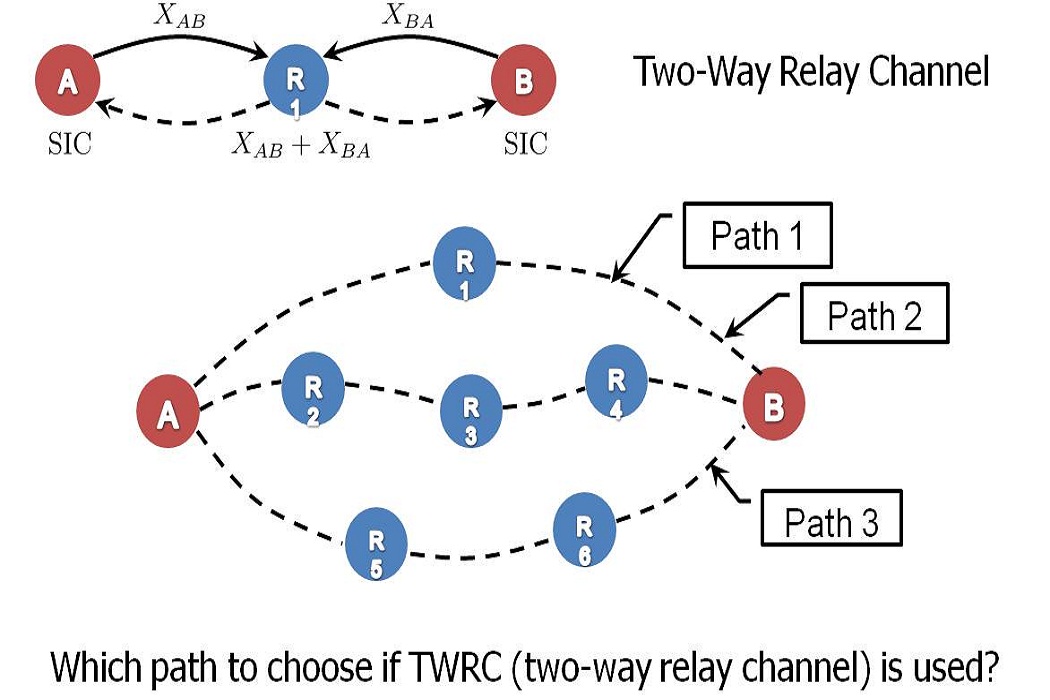|

Overview:
Two-way relaying is a promising technique to improve network throughput. However, how to apply it to a wireless network remains an unresolved issue. Particularly, challenges lie in the joint design between the physical layer and the routing protocol. Applying an existing routing protocol to a two-way relay network can easily compromise the advantages of two-way relaying. Considering routing path selection and two-way relaying together can be formulated as a network optimization problem, but it is usually NP-hard. In this paper, we take a different approach to study routing path selection for two-way relay networks. Instead of solving the joint optimization problem, we study the fundamental characteristics of a routing path consisting of multihop two-way relaying nodes. Information theoretical analysis is carried out to derive bandwidth efficiency and energy efficiency of a routing path in a two-way relay network. Such analysis provides a framework of routing path selection by considering bandwidth efficiency, energy efficiency, and latency subject to physical layer constraints such as the transmission rate, processing power, path loss exponent, path length, and the number of relays. This framework provides insightful guidelines on routing protocol design of a two-way relay network.
People: Shanshan Wu
Papers:
S. Wu, W. Mao, and X. Wang, "Information-Theoretic Study on Routing Path Selection in Two-Way Relay Networks," in IEEE GLOBECOM 2013.
|